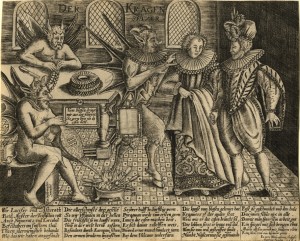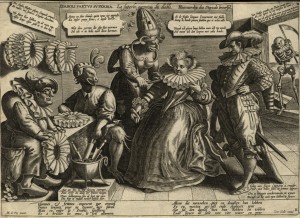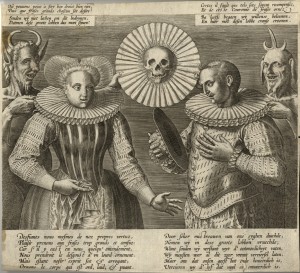In 1817, the April issue of The Critical Review carried an article on Philip Stubbes’s The Anatomie of Abuses (1583), in which Douce and his print Der Kragen Setzer are mentioned with regard to extravagant fashions and to the moral perils associated with them:
The Critical Review noticed that, in his Illustrations of Shakespeare (1807), Douce had described the print as an example of the theme of the Devil’s ruff-shop, of which another version, published by Joannes Galle after Maerten de Vos, can also be found in his collection:
Douce’s attention focused on the “poking-sticks” to which the inscription below the image refers -both Douce and his friend George Steevens considered these satirical prints as visual evidence of the meaning of the phrase ‘poking-sticks of steel’, used by Shakespeare in Winter’s Tale. Douce was, again, drawing upon his own portfolios when he added that “other prints represent several monkeys habited in ruffs, and busily employed in poking and starching them”:
Amusing as these images might seem, the message conveyed by their ruff collars was rather serious. They were associated with Pride and Excess, which would ultimately lead their reckless wearers to eternal damnation. Douce also kept several satirical prints in which well-starched ruffs acquire more sinister connotations:




